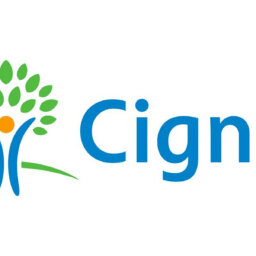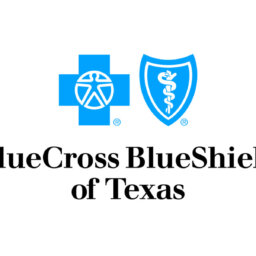
Details About Medigap Coverage in 2020
Original Medicare (Part A and Part B) doesn’t provide coverage for copayments, coinsurance, and deductibles, leaving it up to you to pay for the difference. This is where a supplement—also known as Medigap plan—comes in, which is issued by a third-party insurance company and can help pay for some of Medicare’s uncovered costs.
In some instances, Medigap policies can also provide coverage for additional services, such as medical care when traveling outside the US. They don’t, however, cover long-term care, vision or dental care, hearing aids, eyeglasses, or private-duty nursing.
Related: What is Medicare Supplement (Medigap) Insurance?
2020 is a big year for the Medicare program. In this article, we’ll quickly cover recent changes in the program, coverage adjustments, and premium differences.
First, though, what’s going on?
Why Are So Many Medicare Changes Occurring in 2020?
AHIP.org explains that Medigap plans have undergone three significant benefit changes over the past quarter-century:
- Omnibus Budget Reconciliation Act of 1990 – Required that policies sold after July 1992 conform to one of 10 uniform benefit packages, Plans A through J.
- Medicare Modernization Act of 2003 – Eliminated prescription drug benefits, authorized the addition of Plans K and L, and standardized benefit designs.
Then, five years ago, the Medicare Access and CHIP Reauthorization Act of 2015 (MACRA) was signed into law, which went into effect on January 1, 2020.
The Primary Care Collaborative (PCC) explains that the Act transitioned Medicare from a “volume-driven, fee-for-service (FFS) reimbursement model, to a value-based system that rewards quality and value of care over volume of services provided.”
In layperson’s terms, MACRA overhauled how Medicare pays providers. But, the Act also implemented several other changes that can impact Medigap enrollees in three main ways. Here are the high-level details.
Medigap 2020 Change #1: Plans C and F Are No Longer Available
When it comes to MACRA, perhaps the most significant change for enrollees is that Plans C and F (including the high-deductible Plan F) are no longer be available options for newly eligible beneficiaries beginning in 2020. All other plans, however, remain available for purchase.
The good news is that if you’re already enrolled in a Medigap Plan C or Plan F, you were grandfathered once 2020 rolled around and allowed to maintain your current coverage. However, it’s important to emphasize that if you cancel coverage for any reason, you won’t be able to re-enroll in one of these discontinued plans.
Are you looking for additional options? Newly eligible beneficiaries on or after January 1, 2020, can also purchase a Plan G high deductible option, where the Part B deductible counts toward the overall plan’s deductible.
Medigap 2020 Change #2: Premium Costs
Like any other type of insurance (health-related or otherwise), your overall costs will typically vary from year to year.
For 2020, Medicare Part A premiums will increase anywhere from $12 to $100+, depending on how long you’ve paid into the system. Your Part A deductible will increase $44, your Part B deductible will increase $11, and your Part B premium could go up as much as $30+ per month. Here’s a quick reference table outlining some of these Medicare premium changes:
| 2019 | 2020 | |
| Part A Premium | $240 – $347 | $252 – $458 |
| Part A Deductible | $1,364 | $1,408 |
| Part A Coinsurance | $0 – All Costs | $0 – All Costs |
| Part B Premium | $135.50 – $460.50 | $144.60 – $491.60 |
| Part B Deductible | $185 | $198 |
| Part B Coinsurance | 20% | 20% |
Medigap 2020 Change #3: Closing the Donut Hole
Medicare’s ‘Donut Hole’ is a temporary limit on what the program will pay for your prescription drugs. Once you reach that limit, you’re responsible for 100 percent of your out-of-pocket costs until you reach a second limit, after which Medicare will once again help pay for covered medications.
With these details in mind, Medicare paid 56 percent of the cost of generic drugs while in the Donut Hole during 2019, leaving beneficiaries responsible for the remaining 44 percent. For 2020, however, your responsibility decreases to 25 percent once you and your plan have spent $4,020 on covered drugs for the year.
While we’ve provided a high-level overview of the ways Medigap coverage has changed for 2020, choosing the right plan can still present a challenge. Before wrapping up, let’s briefly discuss how you can arm yourself will all of the information — and expertise — you need.
Where Can You Learn More About 2020 Medigap Supplement Coverage?
Michael Steele and the team at IHS Insurance Group have years of experience helping clients like you find real-world answers to their complex Medigap coverage and cost questions. We’re proud to say that all of our agents are licensed, AHIP certified, and highly-trained – many also hold advanced degrees and certifications, to further assist your needs.
Since our founding in 2005, your satisfaction is our number one goal!
In the meantime, if you’d like to instantly view up to 15 competitive carriers, review coverage details, and compare rates before speaking with one of our licensed agents, please click this link and be directed to our online quoting portal.
Need a FREE Quote or have questions regarding Medicare Coverage? We have three convenient ways to reach us:
- If you prefer to talk to a licensed agent directly, please call (866) 480 5063.
- If you prefer to fill out a quick form and have an agent get back with you at your convenience, use the GET A FREE QUOTE.
- Lastly, for those that want an immediate quote, please click HERE.
Also, check out our Medicare FAQ’s here.














